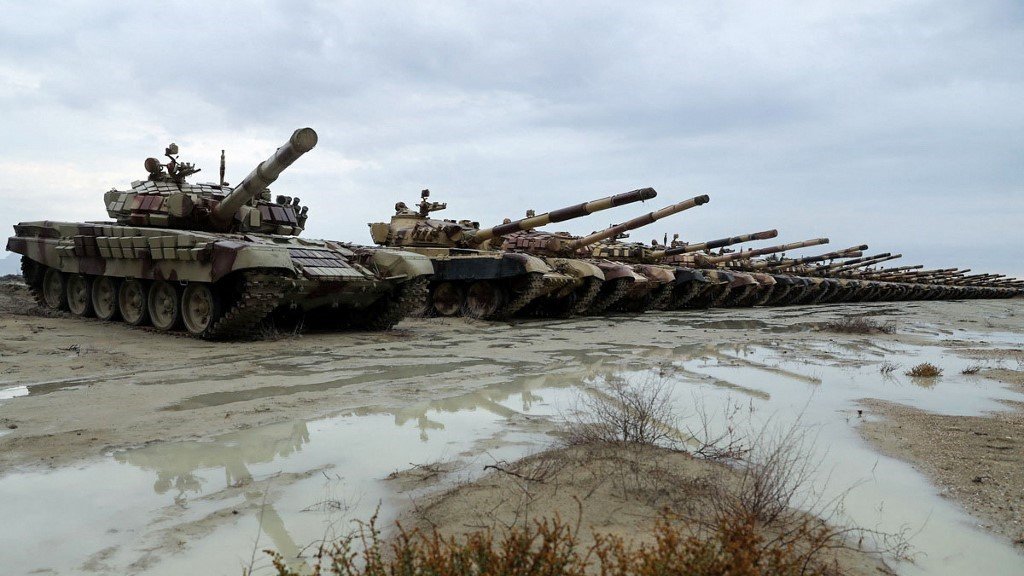Iran has sparred with the UAE for years over three islands at the mouth of the Strait of Hormuz

Iranian tanks shown during a military drill in Makran beach on the Gulf of Oman, near the Hormuz Strait in December 2022 (Iranian Army office/AFP)
Published date: 12 November 2024 14:50 GMT | Last update: 4 sec ago
Iran has cited a 19th-century British map as part of its dispute with the United Arab Emirates over a number of Gulf islands.
Abu Musa, Greater Tunb and Lesser Tunb sit at the entrance to the strait of Hormuz, the route for oil tankers leaving from the Arabian Gulf to the Gulf of Oman.
Iran took control of the islands in 1971 after Britain, which had controlled them since 1908, withdrew its forces from the islands.
Since then the islands have been claimed by the UAE, with the emirate of Sharjah claiming Abu Musa and the emirate of Ras al-Khaimah claiming the other two.
With the dispute deepening after the EU last month issued a joint statement with the Gulf Cooperation Council condemning Iranian “occupation” of the islands, Iran has turned to a document drawn up more than 130 years ago on the instruction of then British foreign secretary, the Marquess of Salisbury.
New MEE newsletter: Jerusalem Dispatch
Sign up to get the latest insights and analysis on Israel-Palestine, alongside Turkey Unpacked and other MEE newsletters
A map dated 27 July 1888 given to Iran’s Shah Naser al-Din Shah Qajar by the UK ambassador Henry Drummond Wolff – and now in possession of the Islamic Republic – has been pointed to as determining the islands belong to Iran.
An 1892 book, Persia and the Persian Question, by George Curzon, the viceroy and governor-general of India, has also been cited.
The barren islands contain little in the way of natural resources. Of the three, only Abu Musa has a civilian population, which numbers around 2,000 people.
But the three islands sit near the Strait of Hormuz, the vital sea passage between the Gulf and the open ocean through which around 20 percent of the world’s oil, and around 25 percent of the world’s liquified natural gas, pass through.
They have been a source of contention between the UAE and Iran for decades.
For nearly 20 years, the UAE and Iran maintained an uneasy interim agreement which led to both countries sharing Abu Musa’s offshore oil revenues.
However, after talks to settle the dispute collapsed in 1992, Iran began cementing its military presence on the islands.
Middle East Eye delivers independent and unrivalled coverage and analysis of the Middle East, North Africa and beyond. To learn more about republishing this content and the associated fees, please fill out this form. More about MEE can be found here.
